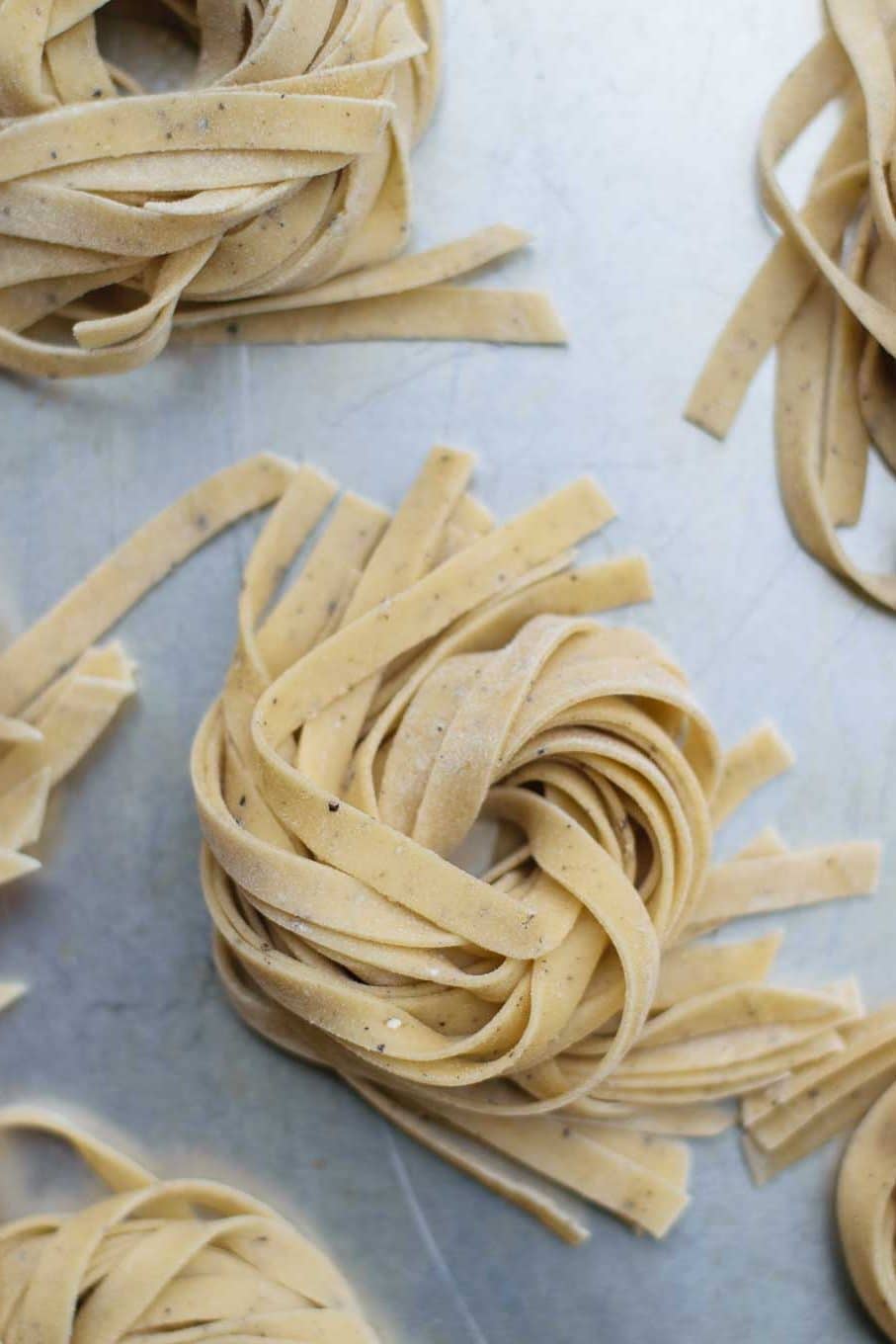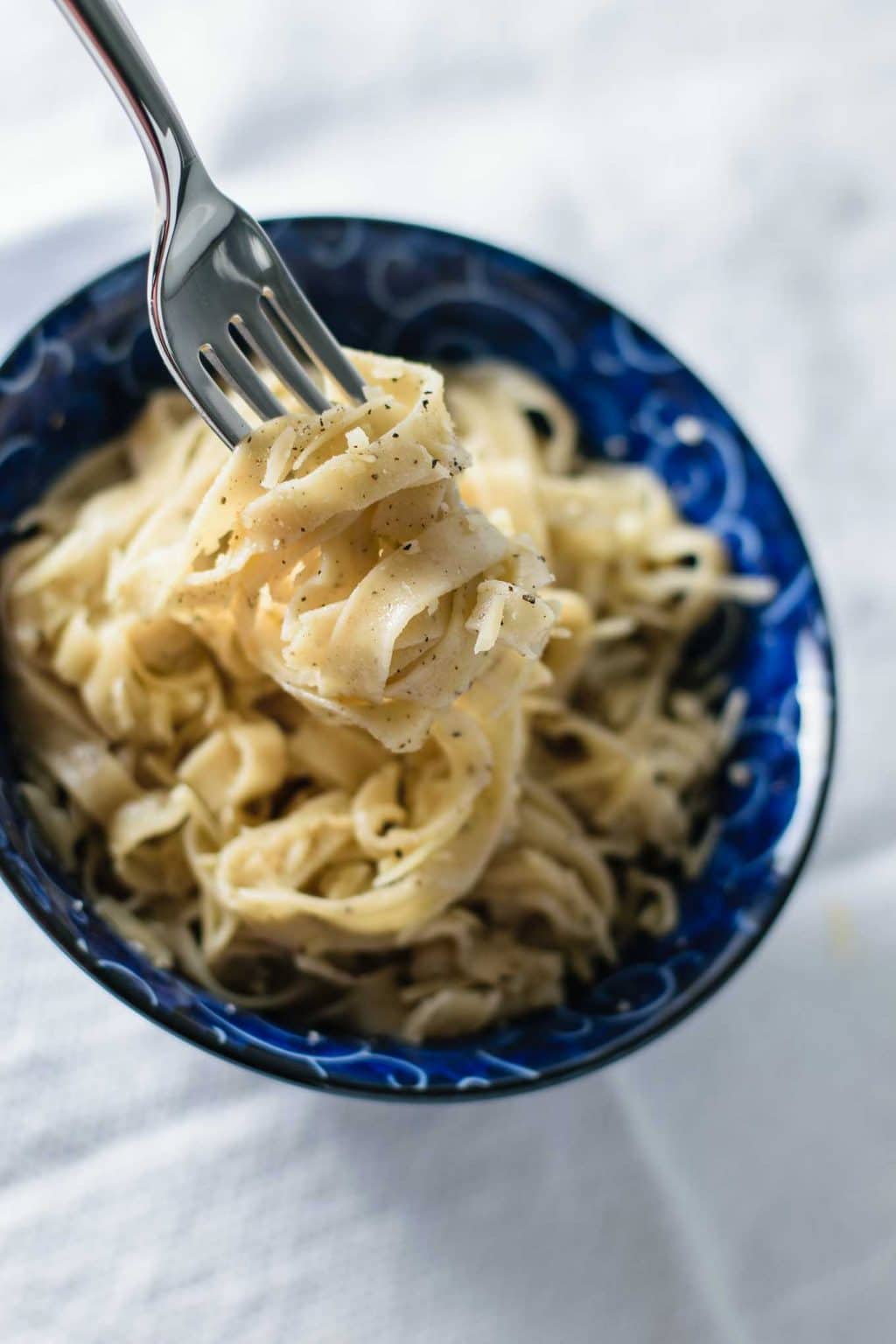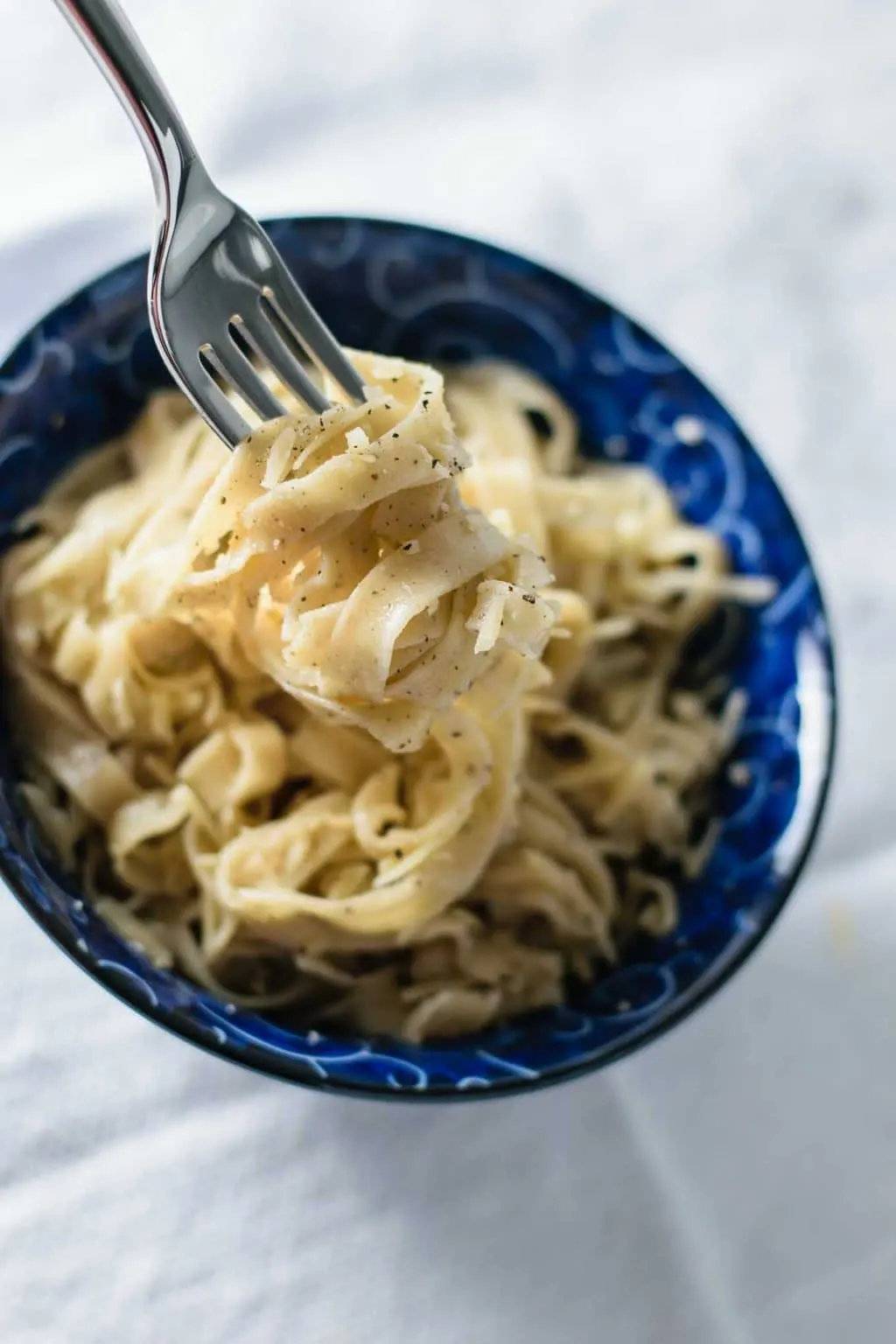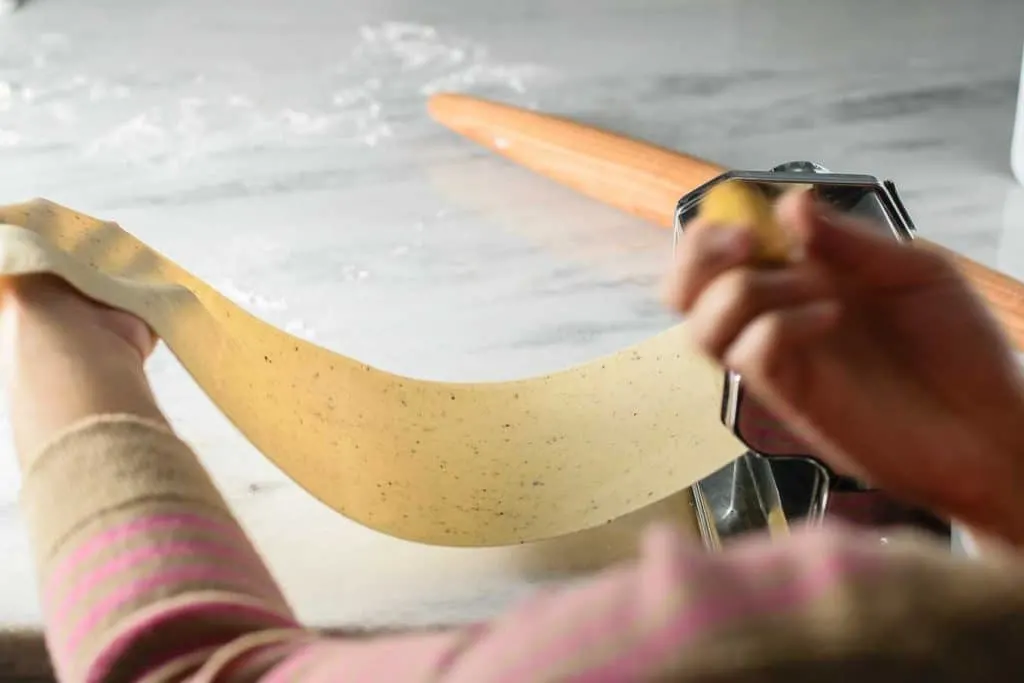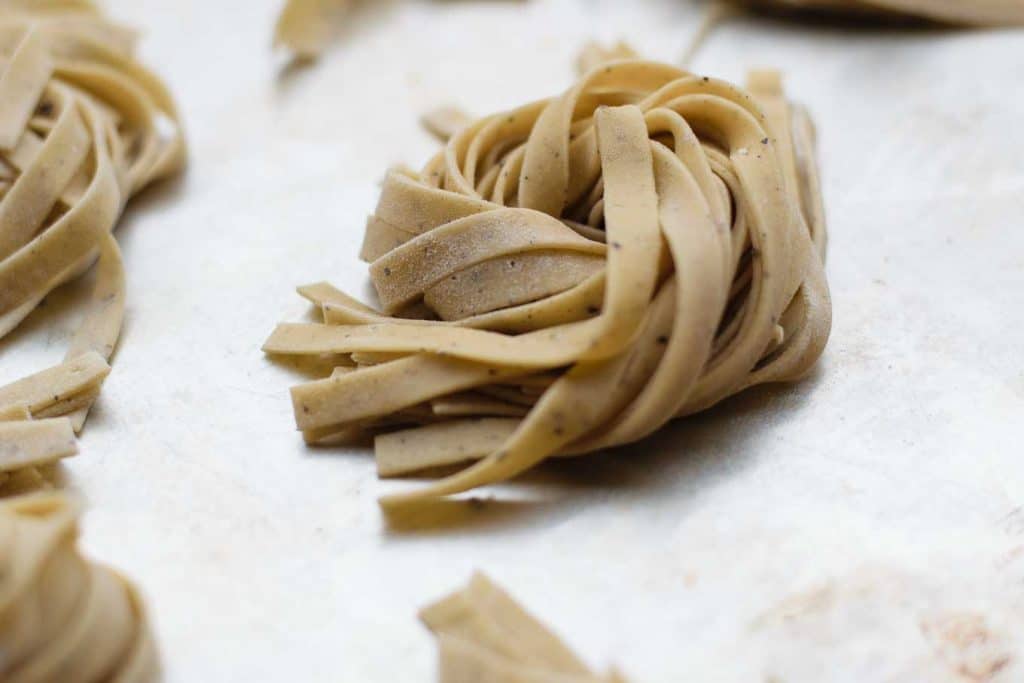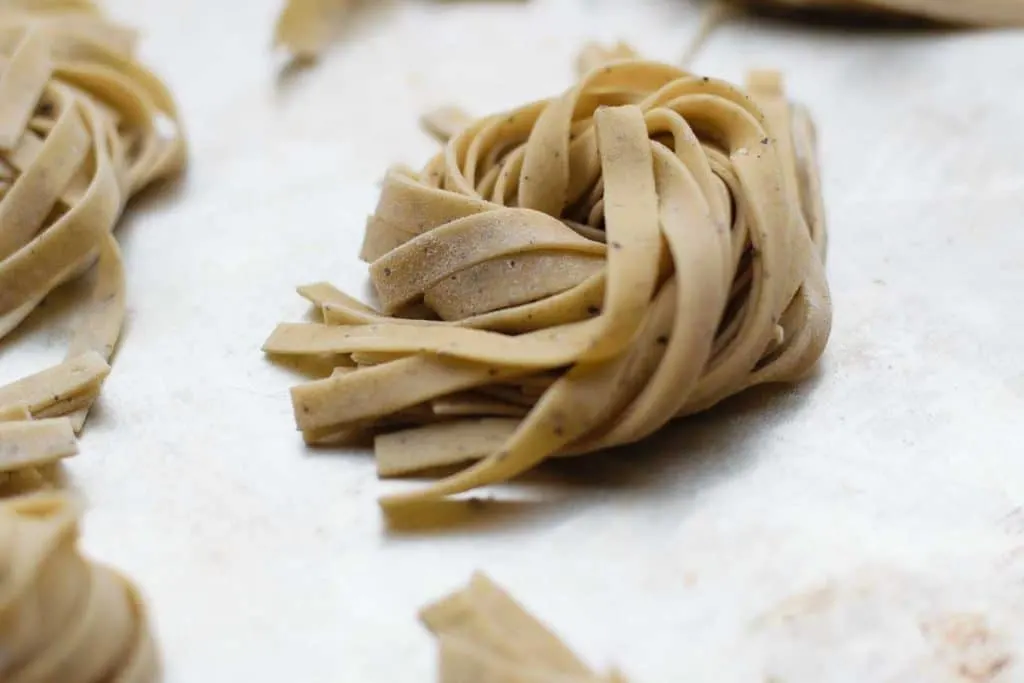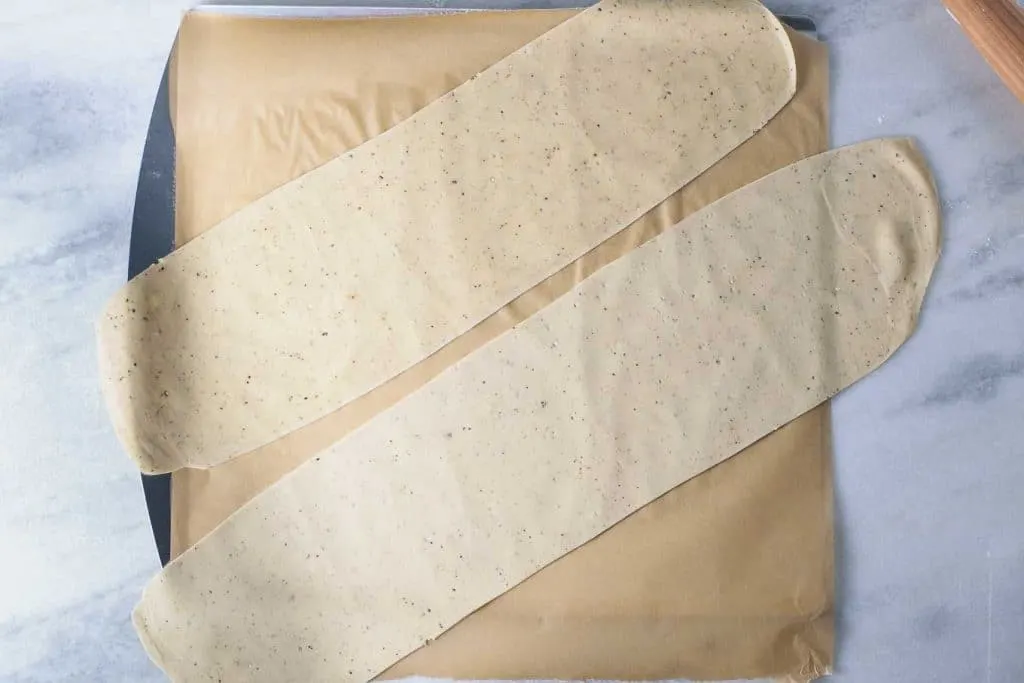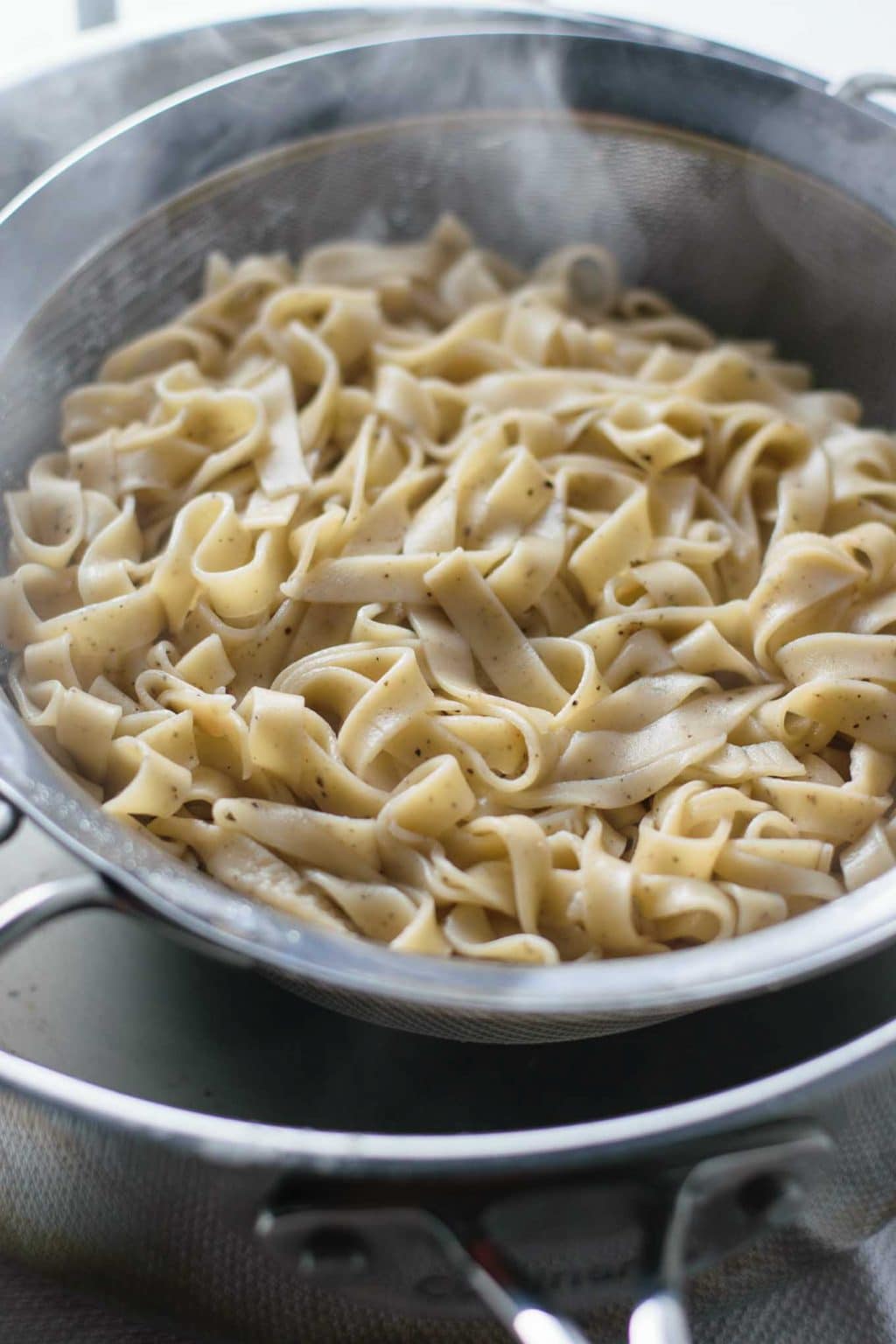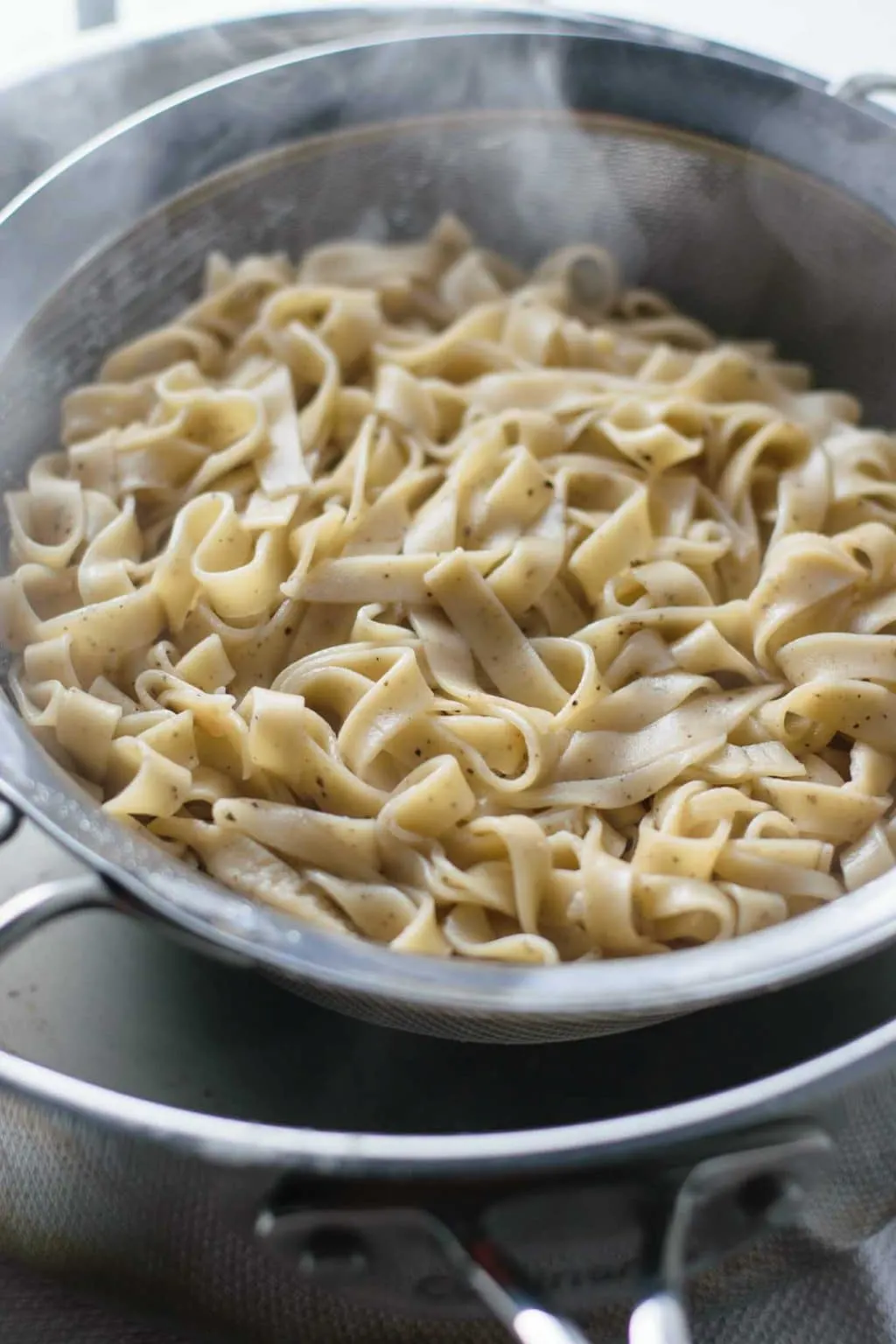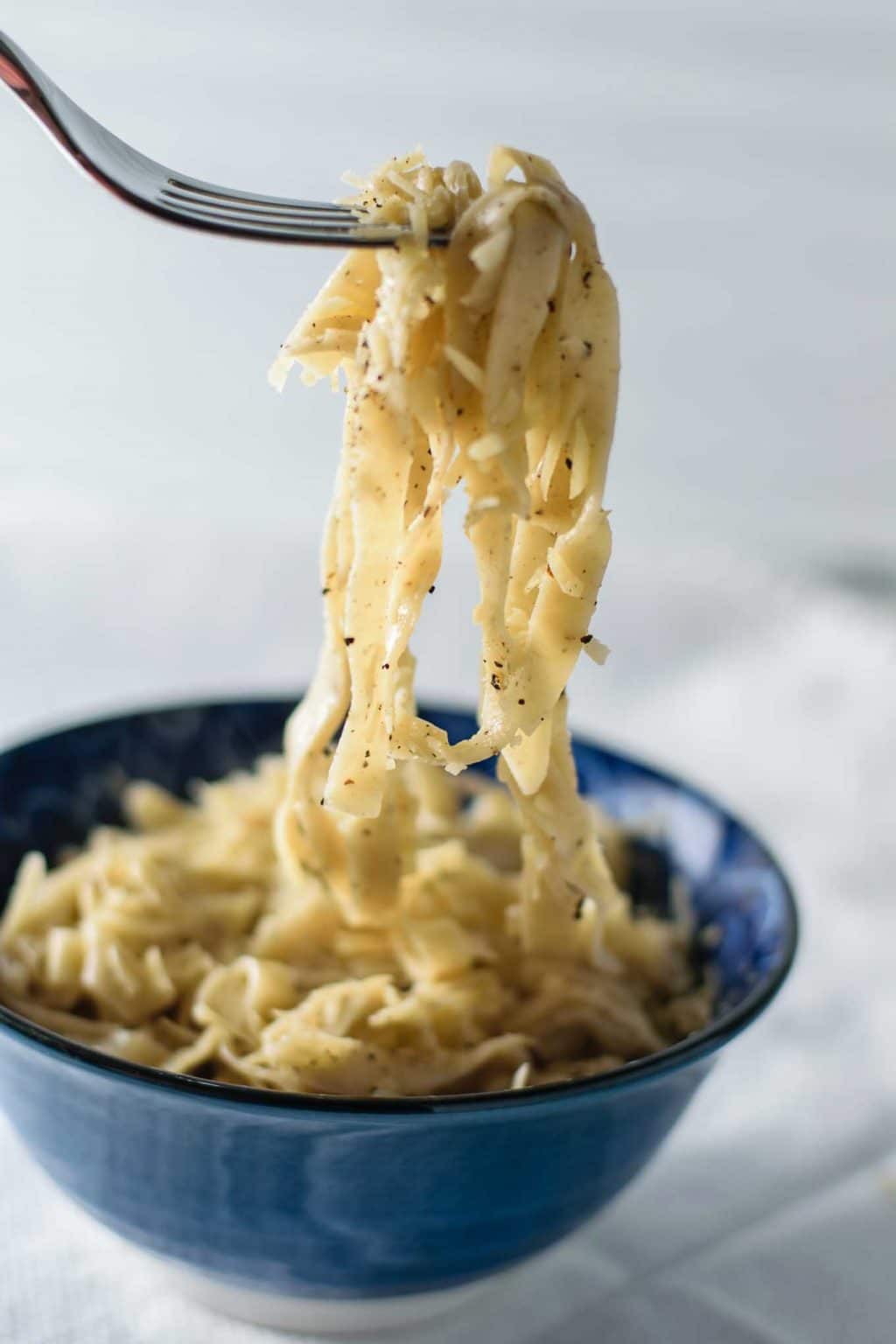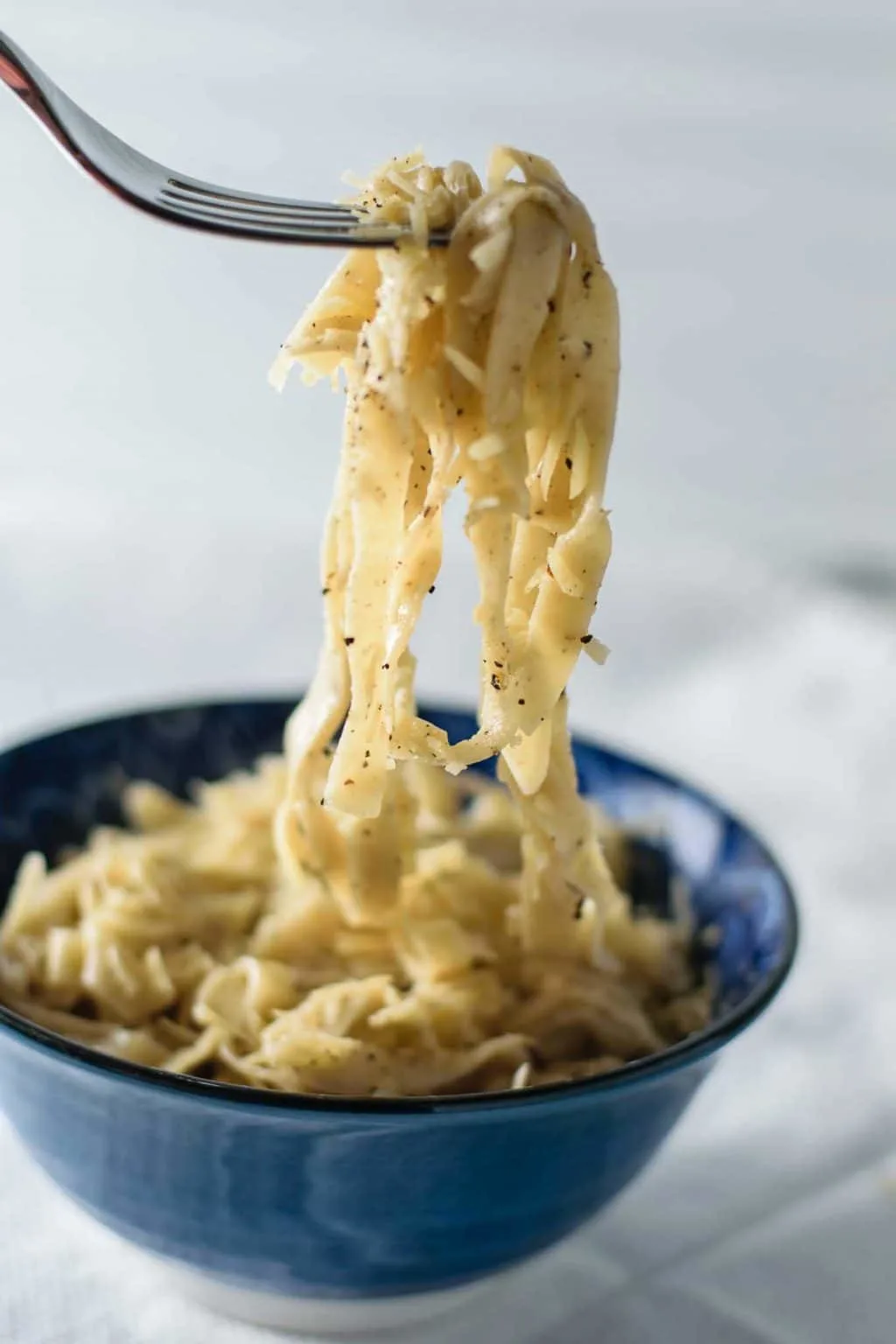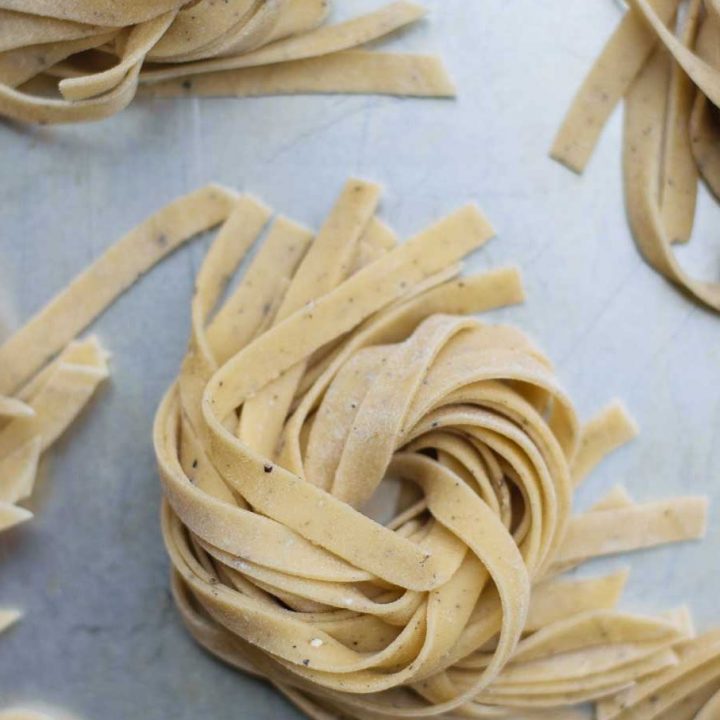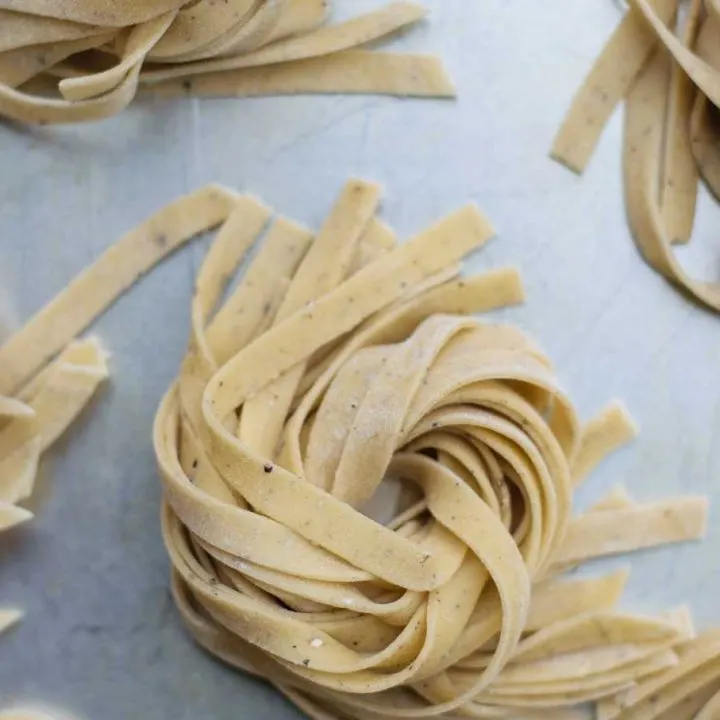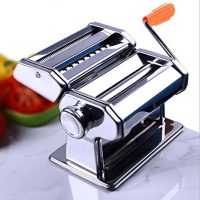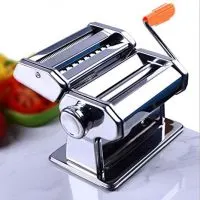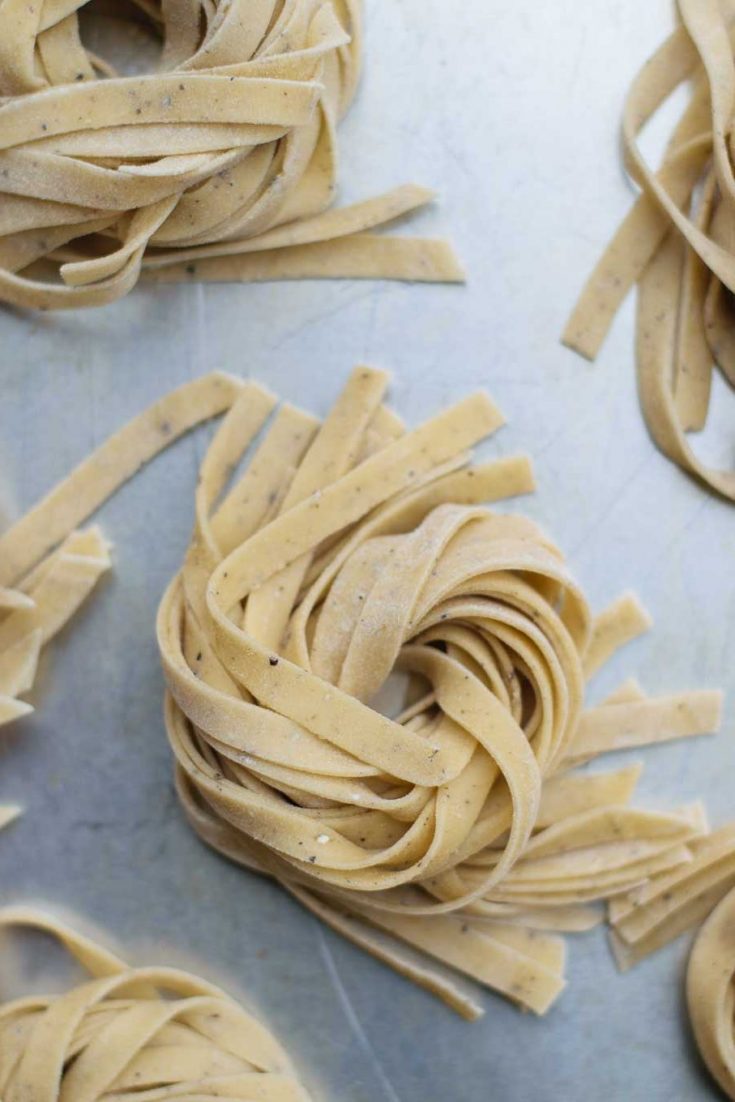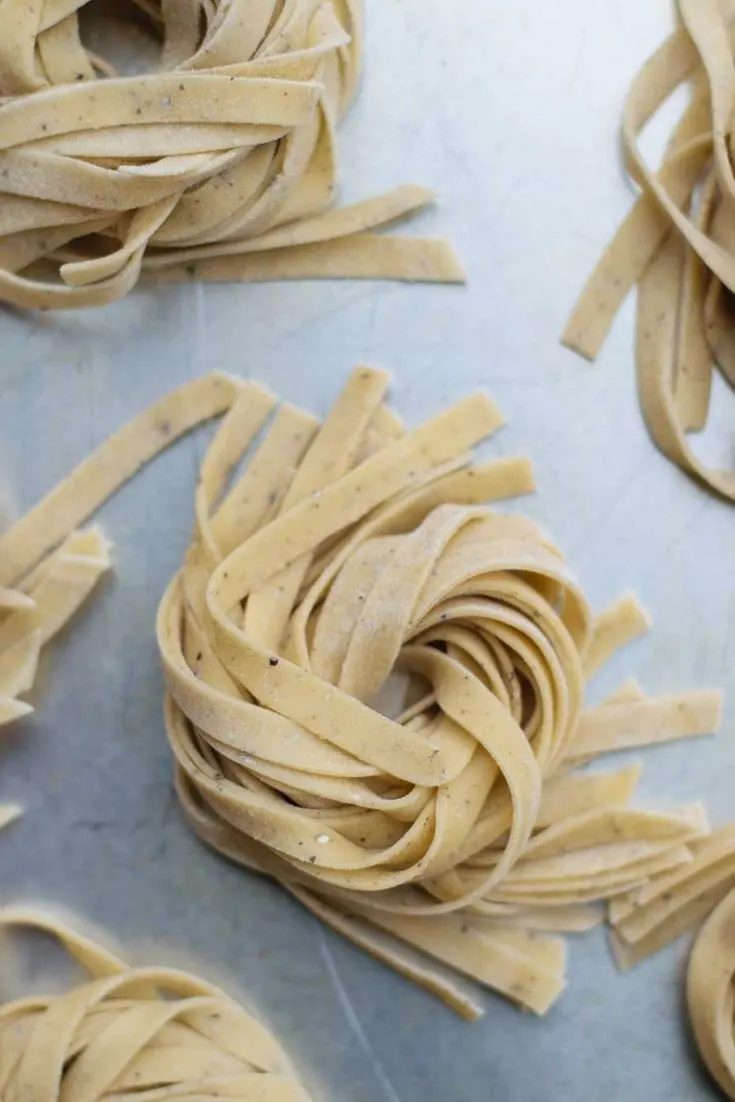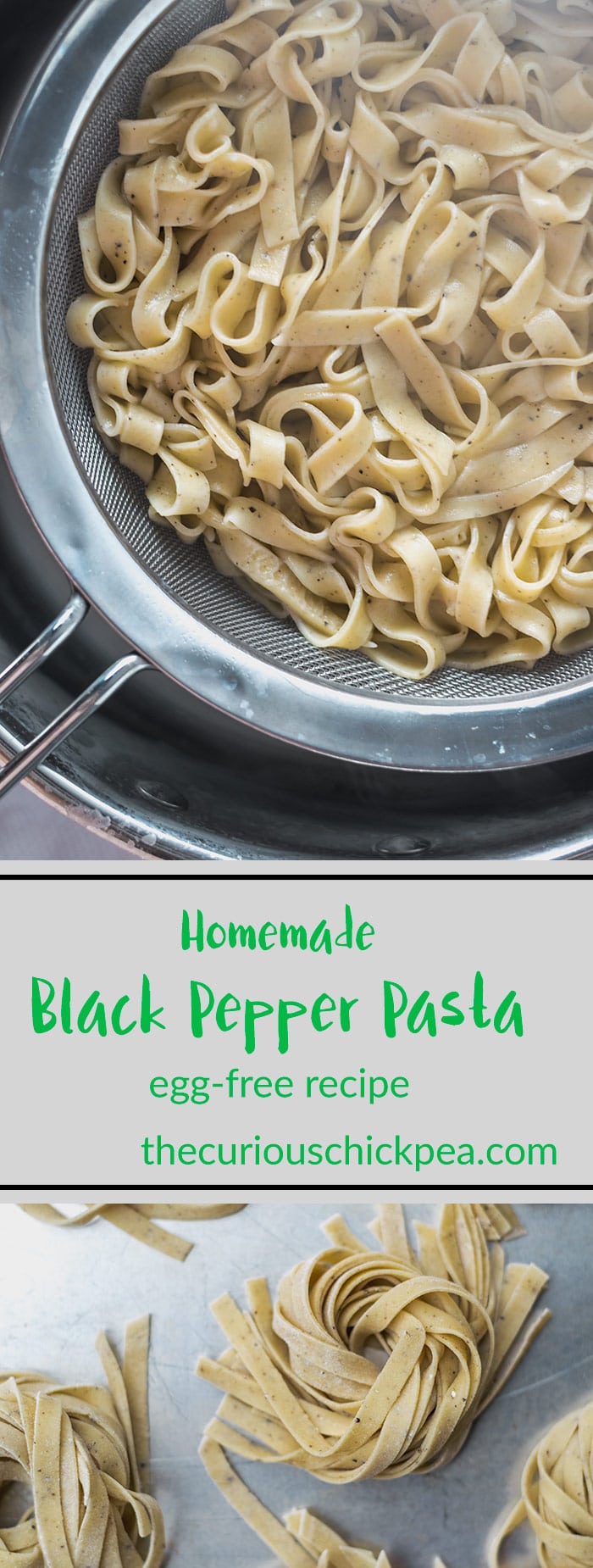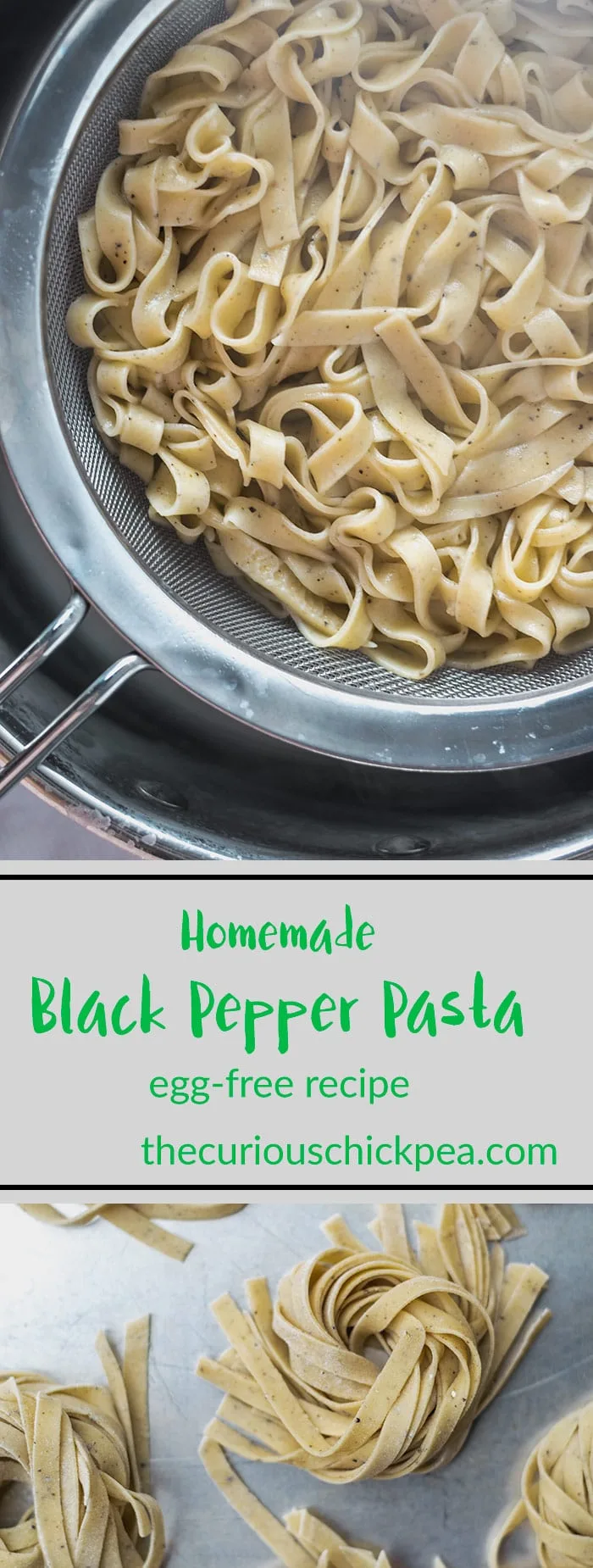If you’re like me, and have a seemingly insatiable love for pasta, you might spend a disproportionate amount of your time reading about pasta making techniques, recipes, and theories. You may have even tried making your own at some point.
You might also have noticed a big trend with homemade pasta dough–eggs, egg yolks, egg whites, and more eggs. You might grab your hair and stress, “how can the most vegan food (noodles) take on such a non-vegan ingredient when you make it fresh??” Or maybe you’ve read somewhere that pasta doughs made without eggs are lifeless, tasteless, waterlogged messes. As someone who has been making egg free pasta since high school (that’s over 10 years for those wondering), I’m here to tell you that is NOT the case.
Now, if you take a mixture that is solely made up of water and flour, it probably isn’t going to taste great when boiled. You can’t expect replacing the starches and proteins in egg yolks with water to yield the same results. I’ve talked about this in previous bread recipes, but fat coats the protein strands in wheat flour for a more tender result. It prevents the gluten network from building up as much as that in a lean dough (containing no fat, sugar, milk, or the like). It’s not that lean doughs are bad. My favorite artisan style breads that I eat every week are made of lean dough! Successful vegan pasta doughs try to replace some of this fat and starch to more closely replicate the desired texture of fresh pasta. In this recipe I use a combination of aquafaba, or the liquid from a can of beans, and extra virgin olive oil for a richer tasting pasta. For the aquafaba, I use a the liquid from a can of chickpeas, which most people find has the “strongest” and best aquafaba (i.e. highest concentration of starches). A large 25 to 30 oz can of chickpeas contains the perfect amount of liquid. To use, I shake the an to loosen the starches and redissolve them into the liquid before opening, then reduce the liquid down by half to make a thick and viscous aquafaba. In this pasta dough we don’t want extra water, so reducing is a quick (literally takes under 10 minutes if you use a larger pot with more surface area for the liquid to evaporate) extra step that makes a big difference in the end pasta. Olive oil brings a delicious rich flavor to the pasta and also replaces the fat in egg yolks. The fat content in 1 tbsp of olive oil is the equivalent of about 3 whole eggs.
Once you’ve replaced those starches and fat it’s time to think of the texture of the dough. I find the best pasta to be made of stiff, low-hydration doughs. You’ll notice this in the recipe doesn’t have any water, milk, or liquid beyond the thick, reduced aquafaba and olive oil. If I do on occasion find the dough on the dry side with this amount of liquid, to add more I’ll drizzle in 1 tsp of water into the food processor, or if kneading by hand, just wet my hands and work that moisture into the dough. The stiffness of this dough makes it a bit of an arm workout to knead, and so I usually make the dough in my food processor. Using the metal S-blade to cut through the gluten network works as well as kneading to develop the dough, and you’re done with the whole process in about 2 minutes. You’ll want to do a quick 1 minute knead on the counter after to check the feel of the dough (does it need more water? more flour?). In the end you want a dough that is stiff but not dry, nor should it be tacky to the touch. A 30 minute rest on the counter lets the flour fully absorb the water and the gluten to relax enough to roll the dough more easily. For rolling the dough, it’s easiest to use a pasta rolling machine. I use a hand crank machine, it was under $30 and is over 10 years old, probably similar to this one on amazon, but there are nicer hand crank pasta machines available for more money, and someday I hope to own a kitchen aid pasta attachment for my stand mixer (is that what Black Friday & Cyber Monday are for?). For best success using any pasta roller machine you’ll want to begin by rolling the dough by hand until fairly thin before sending it through the roller at the widest setting. Then run the dough through the same thickness setting 3 or more times until it’s no longer flatting the dough further before turning it to one setting thinner. You’ll do this with each thickness setting for best results.
The second thing you’ll want to do, is manually fold the dough a couple of times throughout the rolling process. Once you’re about 3 thickness settings through the roller, place the dough on the counter and fold the edges into the center to meet. Then fold the dough in half, and roll by hand in the opposite direction you had been rolling in previously. Then starting again with the thickest setting of the pasta machine, continue to roll in the opposing direction. You’ll repeat this at least one more time during the rolling process. This works the gluten in two directions for the best texture, and also makes the dough a lot easier to work with. For noodles, from spaghetti to linguini to ultra wide hand-cut noodles, I like to get my final dough to the 3rd of 4th thinnest setting, as I like a thicker noodle. For a stuffed pasta like ravioli or tortellini I go to the 2nd or 3rd thinnest setting as the dough will stack doubly thick around the edges. To some extent this is just personal preference, you just want to make sure the dough can cook through within the 2 minute or under cook time. If at any point your dough is sticky, dust with a thin coating of flour.
As far as the flour goes, you can use all purpose flour or you can find the finely milled, high protein 00 flour. I’ve made it both ways, and don’t notice a huge difference. I do make sure to source good quality all purpose flour however (for all my baking). Brands like King Arthur Flour and Bob’s Red Mill (in the US) make higher protein all purpose flours than the typical generic brands I’ve encountered at the grocery store. I salt my dough because it adds layers of flavor into your final pasta dish, and I make this dough extra peppery because 1) I love the flavor of black pepper, and 2) it’s really good that way. This amount of black pepper makes for quite the peppery pasta. You can always cut back if you’re not as big of a fan. Making vegan pasta dough is easy! You can use your food processor to do the kneading (i.e. the hard work) for you. Once you’ve gotten the hang of rolling out the dough into thin sheets, it actually goes quite quickly (especially if you are doing it with a pasta machine, and doubly so if it attaches to your stand mixer). Put on some tunes, invite a friend to join you, and then celebrate with mounds of freshly made pasta. There’s nothing quite like it! Let me know if you try this recipe, or if you have any questions! And as always, let me know if you do make it! Leave a comment and/or rate the recipe below, tag me on Instagram (#thecuriouschickpea), or share with me on Facebook! Happy pasta making!
Notes:
You can roll pasta dough by hand with a rolling pin, but it’s quite the workout, and you probably won’t get the dough as thin as a machine would. You might want to start with a higher hydration dough, that is, add more aquafaba or water at the beginning. Aquafaba is the liquid from cooking beans. Chickpeas create some of the best aquafaba, and it’s easiest to collect it from a can. When separating the liquid from a can of beans, first shake the can before opening to loosen and distribute the starches and proteins that settle on bottom. Strain the liquid to separate it from the beans, and then for this recipe you will need to reduce the aquafaba. Reduce it by half the volume by simmering over the stove, checking after 5 minutes every minute or two until you have half the amount. You can then use right away or freeze the liquid until you’re ready to use it (make sure to label it!). I love the peppery taste of this pasta, but if you’re not a black pepper lover you can either reduce or remove it completely. But it’s so good and flavorful with the black pepper!
Reduce aquafaba straight from a can of chickpeas by about 1/2 the volume. Simmer in a medium pot for around ~8 minutes (more or less depending on size of pot and amount of liquid you are simmering). From a large 25-28 oz can of chickpeas, I typically get around 1 1/2 cups of aquafaba, which I reduce to 3/4 cups before using.
Pasta Maker Machine,Stainless Steel Removable Noodle Making with 2 Cutting Blades & Removable Arm Handle for Fettuccine, Spaghetti Linguini (Silver)
